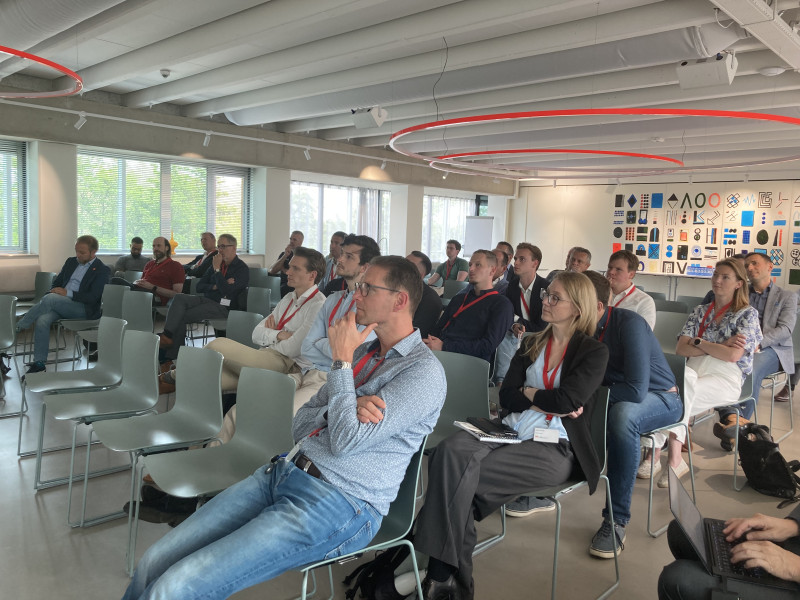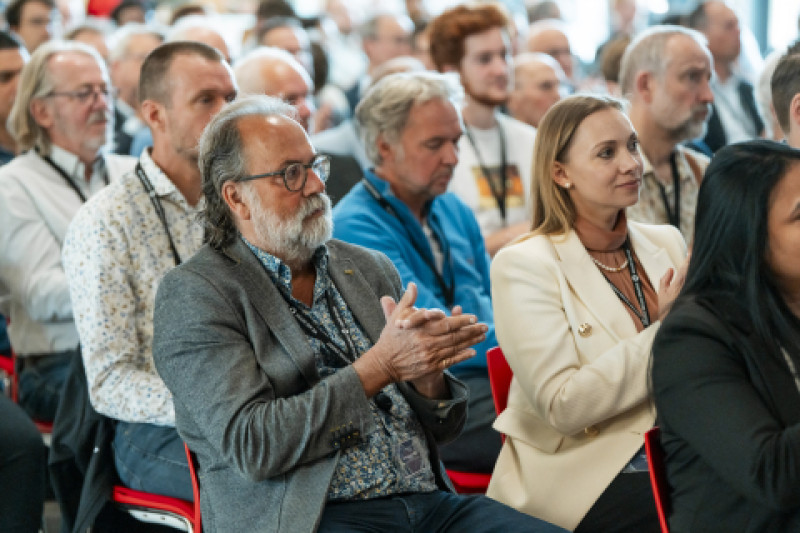Big Science.NL at the Vision, Motion & Robotics
07-06-2023 - 08-06-2023
The industrial fair Vision, Motion & Robotics organised by Mikrocentrum brings together many parties active in this field. Many participants present themselves at their booth, often with interesting examples of the technological solution they are offering. Over the two days many contacts are made between buyers, sellers and collaborators. As Vision, Motion & Robotics are becoming an integral part of the domain of Big Science, the network of Industrial Liaison Officers for these organisations, BigScience.NL provided three presentations on the Thursday afternoon showcasing how these themes play a role in a number of projects:
‘Rocket’ science in the deep sea, presented by Jan Visser from Nikhef and Marck Smit from Nikhef also on behalf of their colleagues Rasa Muller (Nikhef) and Roel Bakker (NIOZ), covered how the Nikhef researchers are making the KM3NeT telescope 3 km under water in the Mediterranean sea to look for neutrino’s, which are ghost particles and can only be observed when an interaction with the water produces a muon which can be traced by the light it emits. The concept of the KM3NeT telescope was an inspiration for the NIOZ researchers to build a system also sunk to great depths at in the same area to study large under water waves with a network of extremely sensitive temperature sensors. These waves are tens of meters high that are responsible for various phenomena in the deep sea from large-scale ocean stratification to marine biology.
Superconducting high-resolution imaging X-ray spectrometers for space and ground based applications, was presented by Luciano Gottardi of SRON, the institute for space research. Through various examples he showed that superconductivity presents advantages that can be exploited in the domain of X-ray vision, specifically with Transition Edge Sensor microcalorimeters, but of course at the cost of rather complex equipment. Given SRON’s heritage, the background of the projects was space oriented. Nowadays, they have reached a technological maturity level such that they are and could be employed at accelerator beamlines, synchrotron facilities and laboratory plasmas for a wide range of applications, from material analysis, low background particle physics experiments to fusion plasma diagnostic.
Ramón Navarro presented the status of the ongoing work on the Extreme Large Telescope that is being built in Chile with significant contributions of the Dutch industry by VDL for a large number of support structures and by Demcon working in the field of adaptive optics. Both projects using technology developed by TNO. He also showed the latest results of the James Webb Space Telescope, which was launched Christmas 2022 and was successfully deployed with 344 single point failure operations. The first images recorded and shown look spectacular, promising wonderful results for the coming years. One of the aims is to look for exoplanets. This will become possible given the high resolution spectrometers able to distinguish minor differences in light yield.



